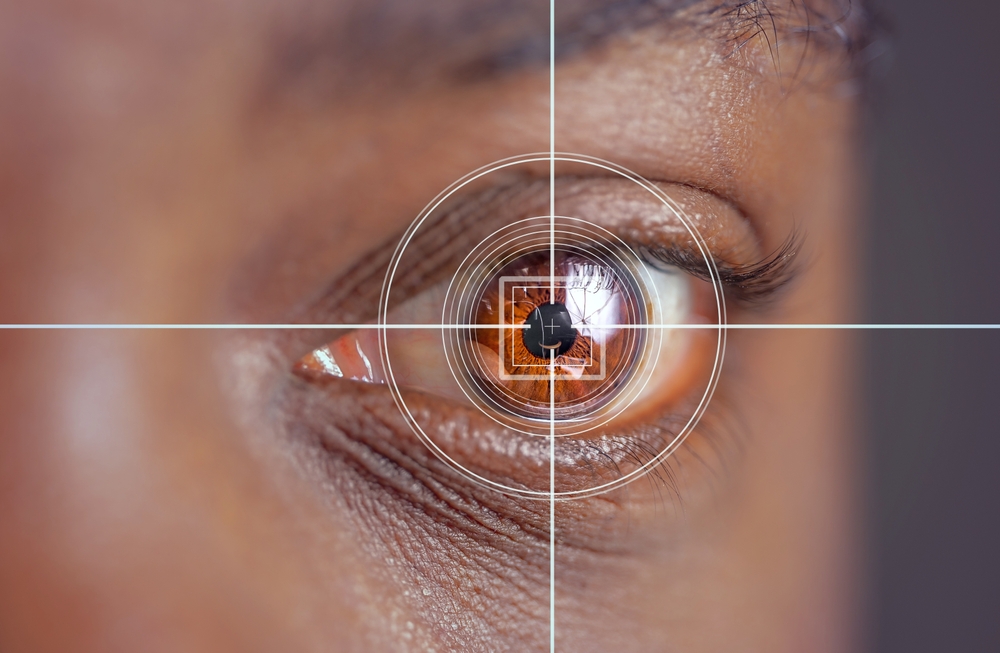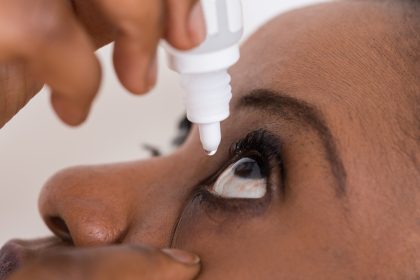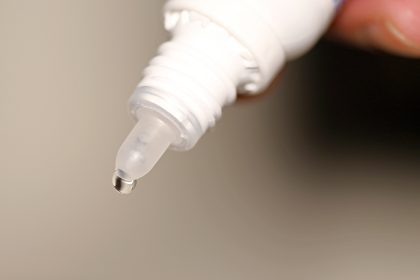For millions of Americans who rely on contact lenses for clear vision, dry eyes represent more than just an occasional annoyance—they’re a chronic condition that can significantly impact daily comfort and long-term eye health. While contacts offer freedom from glasses, they also introduce unique challenges to maintaining proper eye moisture and lubrication.
Understanding the relationship between contact lenses and dry eyes empowers wearers to make informed decisions about their eye care routines. From recognizing early warning signs to implementing preventative measures, the right knowledge makes all the difference in preserving both comfort and vision.
Why contact lens wearers face higher dry eye risk
Contact lens wearers experience dry eyes at significantly higher rates than the general population, and the reasons reveal fascinating aspects of eye physiology. When a contact lens sits on your eye, it fundamentally disrupts the natural tear film that keeps your eye surface moist and protected.
Normal tear film consists of three perfectly balanced layers that work together to maintain eye comfort. Contact lenses literally split this tear film into two separate sections—one layer in front of the lens and another trapped behind it. This physical disruption makes the tear film less stable and more prone to breaking during normal blinking.
The resulting increase in friction creates a cascade of problems. Your eyes become irritated, which triggers inflammation, which then further reduces tear production. This vicious cycle explains why many contact wearers experience worsening symptoms over time rather than adaptation.
Women face particularly high risk, with hormone fluctuations throughout the month and during menopause creating additional challenges for maintaining optimal tear production while wearing contacts.
How contacts damage your crucial meibomian glands
Beyond disrupting the tear film, contact lenses can physically impact specialized oil-producing glands essential for preventing tear evaporation. Located along the edges of your eyelids, meibomian glands secrete oils that form the protective outer layer of your tear film.
Contact lens wear, especially over extended periods, applies pressure to these delicate glands. Research shows this pressure can gradually cause gland atrophy—permanent structural damage that reduces oil production capacity. The resulting imbalance in tear composition accelerates evaporation, leaving eyes chronically dry.
This gland damage represents one of the most concerning long-term effects of contact lens wear, as meibomian gland dysfunction remains difficult to reverse once established. Regular assessment of these glands by an ophthalmologist helps identify early signs of damage before symptoms become severe.
The risk increases substantially for wearers who regularly sleep in their contacts or extend wear beyond recommended timeframes. Even lenses marketed for overnight wear contribute to meibomian gland compression during sleep, making “extended wear” a misleading term from a gland health perspective.
The surprising way high-water content lenses worsen dryness
Counterintuitively, contact lenses marketed as “high water content” often exacerbate dry eye symptoms rather than alleviating them. These lenses initially feel comfortable because they contain more moisture, but this same characteristic makes them more likely to draw water from your tear film over the course of the day.
As the lens dehydrates, it essentially pulls moisture directly from your eye’s surface through osmosis. By late afternoon, what started as a comfortable lens becomes increasingly irritating as it competes with your eye tissue for available moisture.
This moisture-drawing effect explains why many contact wearers experience progressively worsening comfort throughout the day, with symptoms becoming most noticeable in the evening hours. The phenomenon also intensifies in low-humidity environments like air-conditioned offices or airplane cabins.
Silicone hydrogel materials represent a significant advancement specifically designed to address this problem. These lenses allow dramatically more oxygen to reach the eye while requiring less water content, reducing their tendency to dehydrate eye tissue during wear.
The 7 warning signs your contacts are damaging your eyes
Identifying dry eye symptoms early allows for intervention before permanent damage occurs. Contact lens wearers should monitor for these seven specific warning signs that indicate their lenses may be compromising eye health:
- Redness that persists after removing contacts suggests ongoing inflammation rather than temporary irritation
- Blurred vision that temporarily improves after blinking indicates unstable tear film disrupting the optical surface
- Increasing lens awareness throughout the day reveals progressively worsening comfort as tear quality diminishes
- Difficulty removing lenses due to them sticking to the eye surface signals severe moisture deficiency
- Excessive eye rubbing becomes common as the body attempts to stimulate tear production through physical stimulation
- Light sensitivity develops as the corneal nerve endings become exposed and irritated by inadequate lubrication
- Morning discomfort with contacts feels worse than it used to, indicating overnight changes in tear production
The presence of multiple symptoms warrants professional evaluation, as early intervention significantly improves treatment outcomes and prevents progression to more serious conditions.
Environmental factors that multiply contact lens dryness
Contact lens wearers face amplified sensitivity to environmental factors that might otherwise cause only minor irritation. Understanding these triggers helps wearers implement targeted prevention strategies:
Air conditioning systems strip humidity from indoor environments, accelerating tear evaporation and lens dehydration. Strategic humidifier placement in frequently occupied spaces can dramatically improve comfort during extended wear.
Digital device use reduces blink rate by up to 60%, severely limiting tear distribution across the lens surface. The 20-20-20 rule provides essential relief: every 20 minutes, look at something 20 feet away for 20 seconds while consciously completing several full blinks.
Airplane cabins combine extremely low humidity with recirculated air, creating particularly challenging conditions for contact wearers. Removing lenses during flights or using preservative-free lubricating drops every hour helps maintain comfort during travel.
Seasonal allergies trigger inflammatory responses that compound contact lens irritation. During high pollen periods, switching to daily disposable lenses eliminates allergen buildup that would otherwise accumulate on conventional lenses.
Understanding these environmental interactions allows wearers to anticipate challenging conditions and implement preventative measures before symptoms develop.
The best contact lens options for dry eye sufferers
For those determined to continue contact lens wear despite dry eye tendencies, certain lens types offer significant advantages for maintaining comfort:
Daily disposable lenses eliminate exposure to cleaning solution preservatives that commonly irritate sensitive eyes. Fresh lenses each day also prevent protein and lipid buildup that increases friction and inflammation over time. While more expensive initially, these lenses often prove more economical when factoring in reduced need for eye drops and cleaning solutions.
Silicone hydrogel materials allow approximately five times more oxygen transmission compared to conventional hydrogel lenses. This dramatically reduces hypoxic stress that contributes to inflammation and disrupted tear production. The improved oxygen delivery particularly benefits those who work long hours or frequently experience eyes that feel fatigued by day’s end.
Smaller diameter lenses cover less of the eye’s surface, allowing more natural tear flow across the cornea. These specialized designs particularly benefit those with severe dry eye by maximizing exposure to natural lubrication while still correcting vision.
Scleral lenses vault completely over the cornea, creating a fluid reservoir that bathes the eye surface continuously. While requiring more specialized fitting, these lenses provide unparalleled comfort for those with severe dry eye conditions that would otherwise preclude contact lens wear entirely.
Consulting with an ophthalmologist specializing in dry eye management ensures proper lens selection based on individual eye characteristics and severity of symptoms.
Revolutionary treatments changing outcomes for dry eye sufferers
Beyond traditional artificial tears, significant advancements in dry eye treatment now offer contact lens wearers better options for managing their condition:
Prescription anti-inflammatory medications target the underlying inflammation cycle rather than merely supplementing moisture. By addressing root causes, these treatments help restore natural tear production capacity over time.
In-office thermal pulsation procedures apply precisely controlled heat to the eyelids, melting hardened oils that block meibomian glands. This restoration of natural oil flow dramatically improves tear film stability and reduces evaporation.
Intense pulsed light therapy originally developed for dermatology now shows remarkable effectiveness for improving meibomian gland function. The specialized light energy reduces inflammation around the glands and improves their oil-producing capacity.
Amniotic membrane extracts derived from placental tissue contain powerful healing factors that reduce inflammation and promote tissue repair on the eye surface. These biological treatments help restore corneal health compromised by chronic dryness.
The emergence of these advanced therapies means that contact lens wearers with dry eye no longer need to choose between clear vision and comfortable eyes—properly managed, both are achievable for most patients.
Creating a daily routine for optimal contact lens comfort
Maintaining comfortable contact lens wear with dry eye tendencies requires a systematic approach that addresses multiple factors:
Pre-insertion preparation sets the foundation for all-day comfort. Applying warm compresses for five minutes each morning helps stimulate natural oil production before lens application. Following with gentle eyelid cleansing removes overnight debris that could otherwise transfer to lenses.
Strategic timing of drops throughout the day maximizes their effectiveness. Preservative-free artificial tears applied 15 minutes before insertion help prepare the eye surface, while midday application provides renewal without disturbing the lens position.
Proper hydration influences tear composition directly, with research showing that consuming at least 64 ounces of water daily improves tear quality. Limiting dehydrating beverages like coffee and alcohol further supports optimal tear production.
Environmental modifications make significant differences in all-day comfort. Positioning computer screens below eye level reduces exposure to air currents and decreases the surface area of the eye exposed to evaporation. Adding a desktop humidifier creates a microclimate of improved moisture around the face during extended screen time.
Evening removal routines deserve special attention. Rather than simply discarding lenses, performing a final eye rinse with preservative-free saline helps flush accumulated debris and inflammatory mediators from the eye surface.
This comprehensive approach addresses dry eye management throughout the entire wear cycle, significantly improving comfort and protecting long-term eye health.
When to consider alternatives to contact lenses
Despite proper management techniques, some individuals reach a point where contact lens wear creates more challenges than benefits. Recognizing these situations helps prevent lasting damage to eye tissues:
Persistent redness that remains after lens removal indicates chronic inflammation that may not resolve without a complete break from contact wear. This inflammatory state increases risk for more serious complications if lens wear continues.
Progressive intolerance to wearing time, where comfortable periods gradually shorten despite proper care techniques, suggests developing tear film instability that requires professional intervention.
Recurrent eye infections despite meticulous hygiene practices may indicate compromised corneal defense mechanisms due to chronic dryness and irritation.
For those facing these challenges, modern alternatives provide excellent vision without compromising eye health. Advanced laser vision correction techniques now achieve remarkable precision with minimal recovery time. Innovative lens implants offer exceptional visual quality across multiple distances without external correction.
Even conventional glasses have evolved dramatically, with lightweight materials, anti-reflective coatings, and stylish designs eliminating many historical objections to their use.
Rather than persisting with increasingly uncomfortable contact lens wear, consulting with an ophthalmologist about these alternatives often leads to both improved vision and enhanced quality of life.
By understanding the complex relationship between contact lenses and dry eyes, wearers can make informed decisions about their eye care routines. Whether implementing preventative measures, exploring advanced treatments, or considering alternative vision correction methods, knowledge empowers patients to protect both their comfort and long-term eye health.












